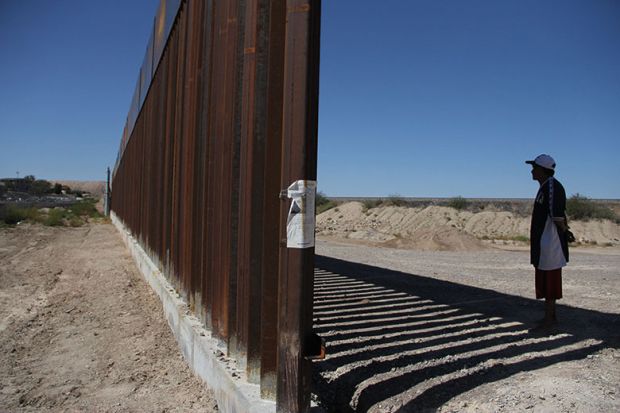The message on the college soccer game billboard could not have been clearer: “Narcos, get out of UNAM!”. Had the sign been situated anywhere north of the Mexican border, readers could easily have mistaken it for a quirky advert for a Netflix drama series. But this was no promotion: it was a deadly serious message from Enrique Graue, president of the National Autonomous University of Mexico, in the context of a drugs war whose reality is all too tangible, even to students at one of Latin America’s largest and most prestigious higher education institutions.
Indeed, according to some observers, UNAM’s exceptional status is very much part of the problem. The institution was founded in 1910, just as the bloody, 10-year Mexican Revolution was beginning. This prompted a drive within the university to gain autonomy from the government, which was achieved by the mid 1920s. Hence when, in 1943, the institution moved to its present-day University City site in the south of Mexico City, its campus, in effect, became an autonomous state, beyond the jurisdiction not just of politicians but also of national and city police.
The university, with its almost 350,000 students, has generally been well served by this status. However, when two students were shot and killed in University City in February – the latest in a string of violent episodes on the campus – many questioned whether current security arrangements remained sustainable.
The most recent official government figures reveal that more than 23,000 murder investigations were opened in Mexico during the first 11 months of 2017 – the highest recorded since 2011, despite presidential efforts to reduce crime. It’s also a well-rehearsed story that young people from disadvantaged backgrounds can easily find themselves faced with a stark choice between pursuing their education and joining a gang, the financial rewards of which may be much higher.
But although those two paths may be very different, both can sometimes lead to University City. Gang members, particularly those involved in the drug trade, are said to take advantage of the campus’ status as a police no-go area. Student campaigners go so far as to claim that many dealers benefit from support from UNAM security staff, who turn a blind eye to their activities, and they have called on Graue to make urgent improvements to security, including potentially granting campus access to Mexican law enforcement. The university has responded by launching a crackdown on the selling of marijuana and cocaine; press reports indicate that more than 40 people were arrested in a recent collaborative operation by city police and UNAM authorities.
UNAM’s security problems are not unique. Many Mexican universities have had problems with regional crime and violence. And while there is evidence to suggest that the situation is improving, campuses in high-crime “red spot” areas, such as the states of Guerrero, Tamaulipas and Veracruz, are plagued by gang violence so common that incidents often don’t even make national news.
For Guillermo Hernández, general director of strategic partnerships at Mexico’s National Association of Universities and Higher Education Institutions (ANUIES), which represents 152 public and private institutions, Graue’s message represents “a great opportunity” for change.
“Security is one of the main issues we have been discussing…[and, in general] Mexican society is not happy with University City because they do not let police in,” he admits. But while few educators in the country will deny that drugs-related gang crime and violence hold back the success of Mexican universities, those willing to talk about it are also clear that it is by no means the only problem faced by Mexican higher education.
“I wouldn’t dismiss the importance of the issue of violence but, to tell you the truth, there are many more important issues,” says Hernández. “In general, universities are not suffering from violence or gangs. Yes, there is a problem with drug dealers sometimes, but I think there is also a tendency for the international [media] to distort, to magnify what is going on in Mexico. Schooling, international collaborations, employment: these are the things we need to talk about.”

The best among Mexico’s universities command prestige and rank highly within Latin America. However, they make little impact at a global level. The country’s two top-ranked institutions in Times Higher Education’s World University Rankings, UNAM and the Monterrey Institute of Technology and Higher Education (known as Monterrey Tech), are in the 601-800 range, and the country only has one more representative, Mexico City’s Metropolitan Autonomous University, in the top 1,000.
Abject poverty in rural states, alongside long-standing cultural divides, means most children in Mexico still don’t even reach high school. The country’s average annual expenditure per student on education of all levels is the second lowest among members and partner countries of the Organisation for Economic Cooperation and Development. The same data suggest that, for every 100 Mexican children who enrol in primary school, eight will never show up, 50 will not complete middle school, and only two will go on to graduate from university.
“The quality of school education in Mexico is terrible. All of it,” says Beatriz Rumbos, dean of the Department of Science, Mathematics and Statistics at Mexico City’s Mexico Autonomous Institute of Technology (ITAM). “The elementary- and middle-school public education is owned by an extremely powerful teachers’ union that cares very little about the educational outcomes of the children.”
The current government has called for the introduction of teacher evaluations and updates to curricula, but “it hasn’t gone well and there have been numerous teachers’ protests. Maybe, if the next administration stays committed to the reform and fixes the problems, things will improve.”
While Mexican law requires children to stay in school until the age of 16, many schools “pass” their students regardless of attendance, turning a blind eye to those who – especially in rural areas – leave formal education sooner to help with family businesses or home care. Even in large urban areas with better attendance rates, the state school system struggles to keep up with Mexico’s booming population.
“Private schools cover this deficit [but] they are very loosely regulated and, except for a few, the quality is no better than the public system,” Rumbos says. “Most of these schools are for-profit businesses where teachers are paid little, so quality teachers are hard to hire: very few have university degrees.”
Indeed, very few Mexicans in general have university degrees. In 2015, just 16 per cent of adults had completed tertiary education according to the OECD: the lowest share across all economically similar countries. The figures are improving, however: 21 per cent of young people aged 25-34 have a degree compared with just 12 per cent of 55- to 64-year-olds. And in 2014, the nation of 130 million people had more than 3 million students enrolled on post-secondary courses, spread across more than 5,000 public and private higher education institutions.
Most of the younger generation of Mexicans aspire to go to university, according to Rumbos. But, of those students who do graduate from high school, around 50 per cent fail the entry test. ITAM, a private university specialising in science and engineering, admits only a “tiny percentage” of applicants. “It may be easier to access public university education but the graduation rate is still very low,” Rumbos says.
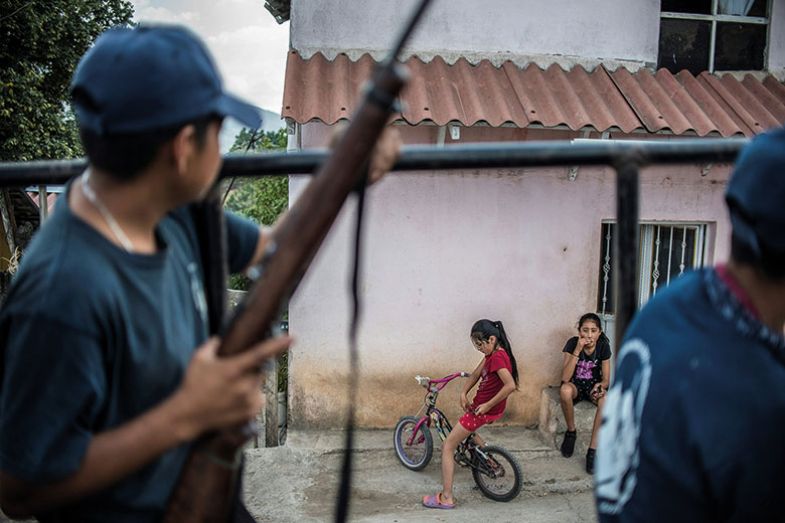
Major economic reforms have seen Mexico’s spending on research and development more than double in the past 20 years, but at 0.55 per cent of GDP, the sums are still small by global standards. The OECD describes Mexico as having “one of the lowest scientific and innovation outcomes as measured by number of scientific publications and triadic patents per GDP”, with “very few” patents filed by universities and public research institutions between 2005 and 2009.
“We are working very hard to build the knowledge economy but, really, we must move quickly because the country is growing up very fast,” explains Hernández.
It will need to: a McKinsey Global Institute report published last year estimates that 9 million Mexican jobs will be lost by 2030 as a result of automation. But a major barrier to building a knowledge economy in Mexico is the country’s dramatic brain drain. The US alone is currently home to more than 300,000 Mexican-born postgraduates, and many never return. “It’s lost talent,” says Hernández. “So it’s not simply a matter of creating more master’s and PhD programmes in Mexico: we also need to take advantage of all of these skilled people who have gone elsewhere.”
With political tensions between Mexico and the US worsening and visa restrictions tightening for immigrant workers, Mexican universities could very well have their wish granted. But they may also have to accommodate significantly more students. As of 2017, an estimated 140,000 people brought to the US illegally as children, most of them Mexican, were enrolled in US post-secondary education under President Obama’s Deferred Action for Childhood Arrivals arrangements. Their future remains unclear but, should these “dreamers” ultimately be forced to return to their countries of origin, as President Trump has threatened, Mexico’s universities will have to expand very rapidly to absorb them.
But contingency plans are in place. Puentes (Bridges) is a programme devised by ANUIES to match dreamers with courses back in Mexico, so they can continue their studies as seamlessly as possible if they are deported.
“We don’t want to use it, but the programme is there in case of the worst scenario,” says Hernández. “We are working together with US associations who stand with us in solidarity. They want to keep their Mexican students, who are really US students now, anyway.”
Some Mexican observers predict that worsening relations with the US and tighter US visa restrictions could also convince more Mexican students to stay home, which could, in turn, reduce the brain drain. However, Rumbos suspects that globally facing students will just opt for other Western countries instead: “Some Mexican students are choosing to go to graduate school in Canada or Europe, rather than the US, because they want to be in ‘politically correct’ countries. I’m not sure if, when they graduate, they will come back to Mexico,” she says.
Latin numbers: measures of Mexico’s research strength
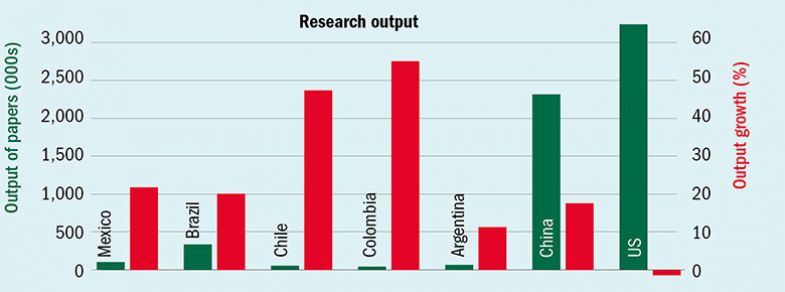
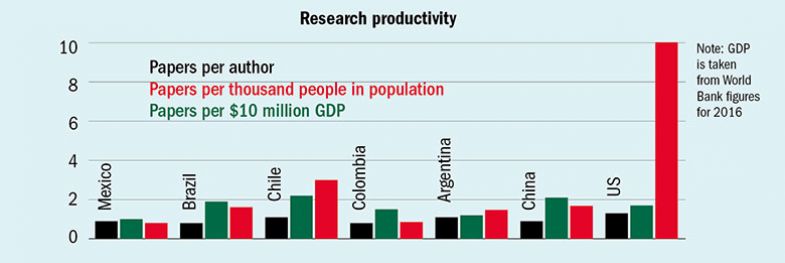
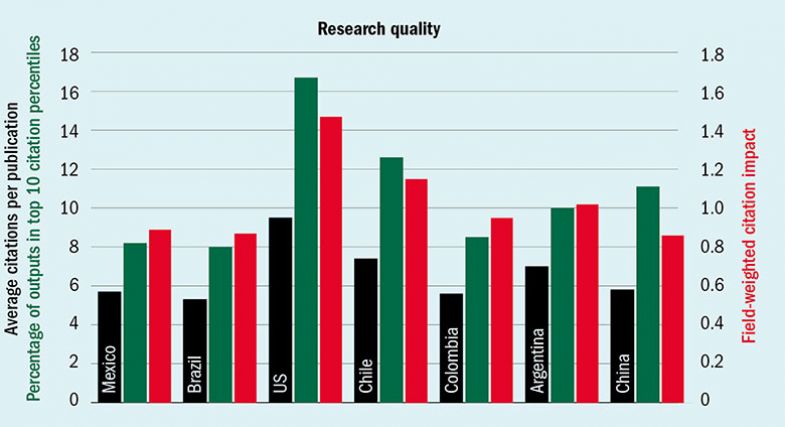
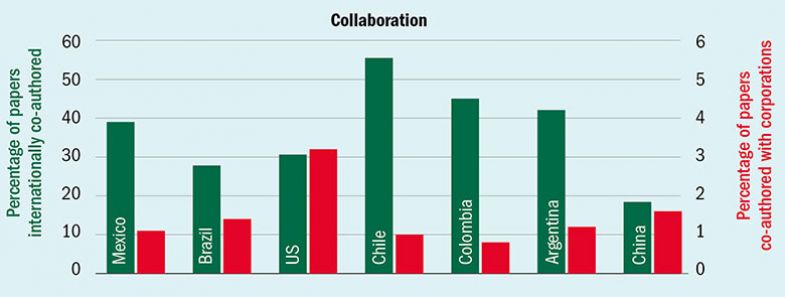
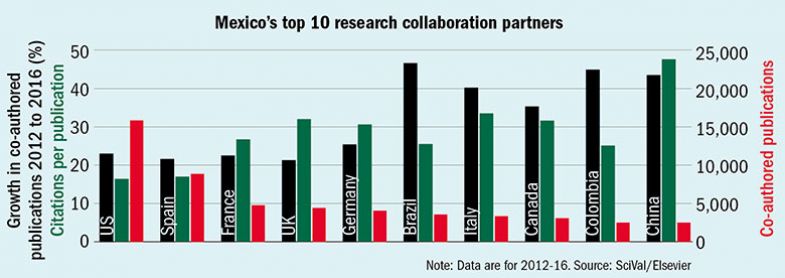
For Mexico to hold on to more of its best students, its universities will have to develop high-quality degrees that guarantee good jobs. That would require the current generation of Mexican academics to make way for an influx of better qualified teachers and researchers. But, according to Rumbos, there are currently “very few jobs in most big public universities since retirement is not compulsory. This makes it hard to hire young people.”
Efforts are being made to nurture young talent, however. The country’s main science funder, the National Council for Science and Technology (Conacyt), has launched a number of postdoctoral scholarship schemes for students within Mexico and abroad. Figures are difficult to come by, but Rumbos estimates that “a few hundred” scholarships have been awarded so far. “On the downside, there is no certainty of what will happen once the [researchers’] initial contract with Conacyt – which lasts around eight years – expires,” she says. “Will the universities hire these people? Will Conacyt, under a new administration, renew the initial contracts? How will these people be evaluated and who will evaluate them? Nobody really knows.”
Another of Conacyt’s programmes involves luring experienced Mexican researchers working abroad back to their homeland. Successful applicants are offered a salary (although no specific grant funding on top of it), as well as a lump sum to pay for relocation expenses. But the funding is difficult to come by since it is only awarded to applicants who have already secured a Mexican job. The scheme has also been criticised for its slow progress; as of June 2015, Conacyt revealed that only 600 researchers had been repatriated into the country since 2007.
One of those is Alma Maldonado, a researcher in higher education. Originally from Mexico City, Maldonado did her PhD at Boston College in the US. But after spending time at the universities of Oxford and Arizona, she wanted to return home.
After initially being offered a job at the Centro de Investigación y Estudios Avanzados del IPN scientific research institution in 2010, Maldonado was informed that the institution did not have the budget to cover her salary after all. “What saved me at that point was the repatriation scheme,” she explains. But she admits that her successful repatriation is the result of “a very happy coincidence: finding an open position, competing for it and then receiving the repatriation [funding]. I met other people who wanted to come back but were unable to find a position in Mexico, or they found a position but they had just finished their studies and didn’t have a formal job, so they were not eligible to apply.
“I think a governmental programme cannot depend on so many factors coming into alignment. At a certain point, I had to leave my job without any certainty of getting the money for my new position, and it was like flipping a coin.”
The one reform that would have the greatest positive impact on Mexican higher education, in Maldonado’s view, would be an increase in salary levels. For every successful Conacyt grant holder, there are countless more Mexican academics who have had to turn down attractive jobs from institutions unable to meet salary requirements – or even offer any salary at all.
Even private universities such as ITAM – where positions are highly coveted – experience a high turnover of staff for this reason. “In the late 1990s, there was a big influx of foreign academics that were hired at ITAM and other places,” explains Rumbos. “At that time, Mexico was relatively peaceful, the exchange rate was favourable [so] we could pay salaries that were competitive with the US and Europe, and the academic job market in the US and Europe was pretty depressed.
She describes international recruitment as “a virtuous cycle”, since it generates more international visitors and greater international awareness of the institution, leading to more overseas candidates. But that circle was broken around 2005 “as the situation in Mexico deteriorated due to violence and a falling exchange rate”.
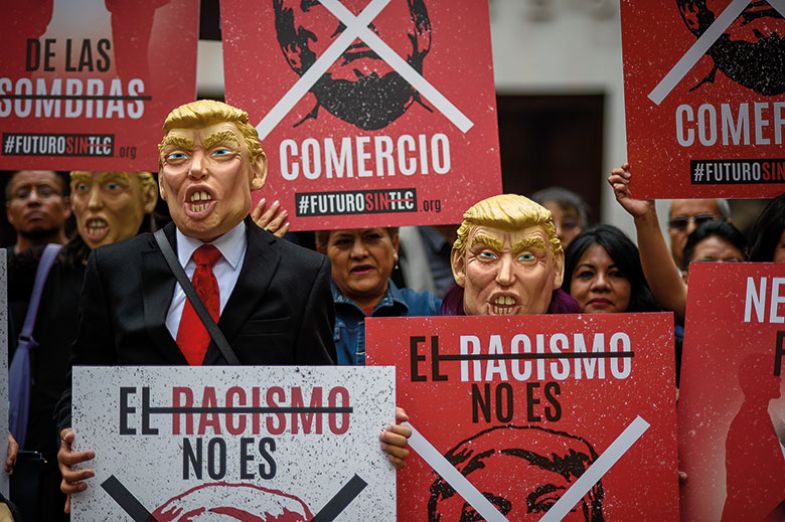
While ITAM is still able to attract good international faculty, their numbers are much smaller than before. “The few that have been recruited typically stay only for a few years, until they can find a job somewhere else,” Rumbos adds. While mobility data from Elsevier’s Scopus database show that more researchers have entered Mexico over the past 20 years, sector leaders acknowledge that a lack of research job opportunities is increasingly pushing academics abroad.
“Most of our universities are…not research institutions, so we need to make a jump here and do more to build our research,” says Hernández. Scopus data show that Mexico’s output of research papers grew by 22 per cent between 2012 and 2016, but that growth is much lower than that of Chile or Colombia (47 and 55 per cent respectively). And Mexico produces less research than any major Latin American nation relative to its population and its GDP. In addition, Mexico’s performance in THE’s Latin America University Rankings 2017 is below par considering that it is, by some distance, the continent’s second most populous nation. Its two universities in the top 25 (out of 81 institutions) compare with 13 for the continent’s giant, Brazil, six for Chile and four for Colombia (although neither Argentina nor Venezuela has any representatives).
Going somewhere? A country comparison of researcher mobility
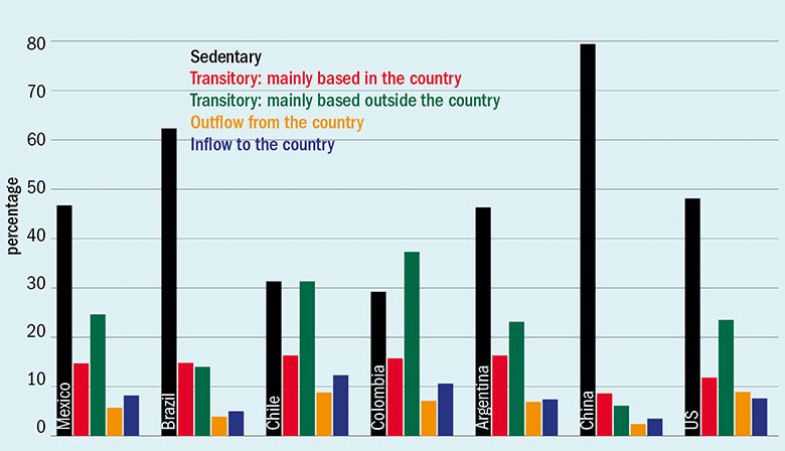
Note: Sedentary = researchers have not published with affiliations outside of Country X. Outflow = researcher first published in Country X and subsequently migrated for at least two years without returning, or researchers migrated to Country X, stayed for at least two years, and then migrated to another country for at least two years without returning. Inflow = researchers first published in a different country before staying in Country X for at least two years, or researchers first published in Country X, migrated to another country for at least two years, then returned to Country X for at least two years. Mainly based in the country = researchers mainly published with affiliations in Country X and spent less than two years abroad before returning. Mainly based outside the country = researchers published mainly from abroad and spent less than two years in Country X before migrating to another country.
Observers insist that Mexico’s poor international standing comes down to its low funding levels for research. Thriving research faculties have largely remained the privilege of long-established public universities such as UNAM. This is partly because public universities automatically receive state funding for research (although faculty members say that, most of the time, the sums are barely enough to cover salaries, let alone pay for resources) and partly, it is claimed, because those on grant and fellowship committees tend to be affiliated with public universities.
Private universities therefore rely on other sources of research funding. One such institution is Monterrey Tech, a non-profit university with about 90,000 students, spread across 31 campuses. A quarter of those are enrolled in high-school courses – a common scenario in Mexican universities – but 8,000 are postgraduates. That is a substantial number considering that the university was entirely teaching focused until, 20 years ago, it took the decision to take up research in a bid for a higher international profile. Nevertheless, progress on that score has not been easy.
“Private universities face a chicken-and-egg situation,” explains Francisco Cantú, associate vice-provost for research at Monterrey Tech. “[We] don’t have the reputation because we don’t have the researchers; we don’t have the researchers because we don’t have the money, and we don’t have the money because we don’t have the reputation. Somehow you have to break the cycle.”
The institution relies on “a portfolio of agencies” to bankroll its research, Cantú continues. “A fair amount of our funding comes from industry, who will sponsor research [they are interested in]”. This source has been growing but “remains a big challenge for us. We don’t have too much experience of charity funding or external foundations but it’s something that is being explored.”
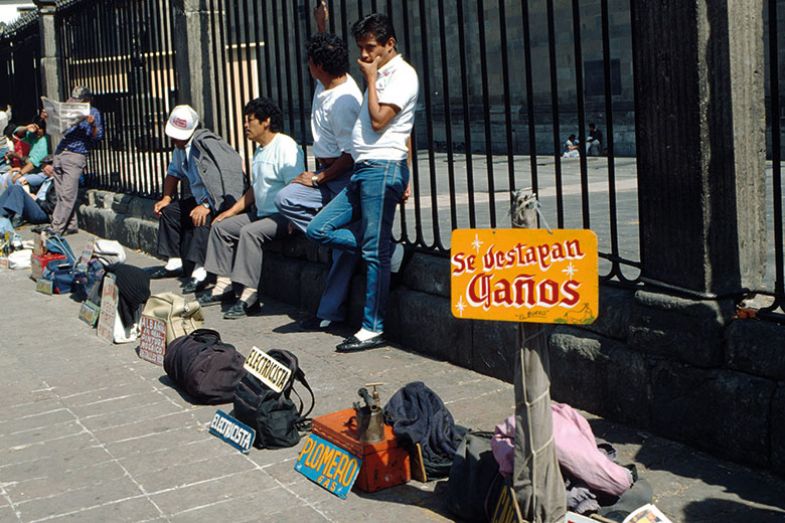
Cantú and his colleagues are also looking at how to tap into international sources of funding for developing countries, such as the UK’s Royal Society and Newton Fund. “Until recently, we didn’t know they existed, but now we have found other international opportunities through applying,” he says.
Monterrey Tech’s level of international collaboration is growing, helped by some strategic alliances – mainly with the Massachusetts Institute of Technology on nanoscience and nanotechnology. And its success is reflected in its THE ranking. Indeed, in THE’s Latin America University Rankings, it is Mexico’s highest-ranked institution – at sixth, compared to UNAM’s 10th – largely on the basis of its international outlook and its industry income.
Yet the institution still struggles to prevent its best researchers from leaving for the US. “We want our students to go abroad – ideally to pursue doctoral studies and eventually come back to Mexico. But for faculty researchers, it is a real concern because we cannot match US salaries or resources,” Cantú says.
The problem can be mitigated, he suggests, by developing “a local environment in which professors and researchers feel comfortable: a good research ecosystem that supplies their need for good students and opportunities to write proposals for research projects”.
But the brain drain will never be stemmed without a great deal more money being pumped into the system.
“I just wish all of the higher education system – private and public – had more support from the government,” Cantú says. “If you want to have a developed economy, then you need a good educational system. And in order to have that, you need to invest money.”
But without a strong economy, it is questionable whether that money will be forthcoming any time soon. “It is the chicken and the egg,” Cantú repeats, ruefully.
后记
Print headline: Mexican standoff
